Rhinella marina
—
Cane Toad
Also known as:
Eastern Cane Toad, Marine Toad
The genus Rhinella was split from Bufo by Frost et al in 2006, then redefined by Chaparro et al in 2007 to include Rhinella marina.
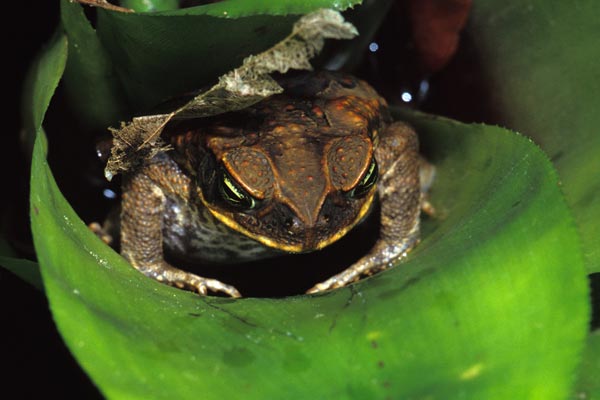
Rhinella marina was introduced to northern Queensland in 1935 in an attempt to control the population of a type of beetle that was ravaging the sugar cane crops. The toads ignored the cane beetles, but began ravaging everything else in sight instead. They have immense appetites, breed by the zillions, and secrete poisonous gunk that makes them unpalatable to all but a tiny handful of native Australian animals (and dangerous to many). When we went out on wet nights in tropical northeast Queensland, we saw a variety of native frogs, but the cane toads outnumbered them at least 20 to 1. The toad pictured here looks like he's hanging his head in shame at what his species has done to the native wildlife.
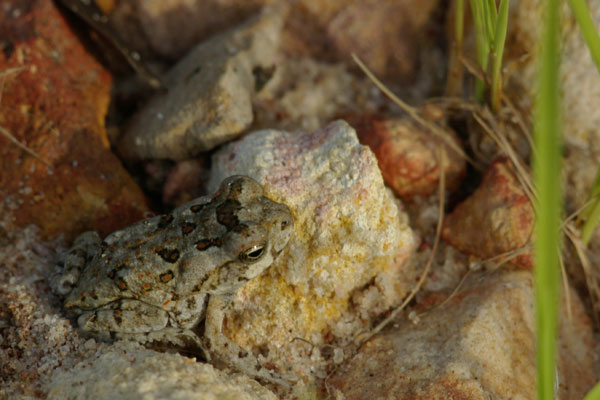
This little toadlet was hopping around on the beach. It can be tough to tell tiny little toads apart, but as far as I've been able to tell Rhinella marina is the only real candidate in this area.
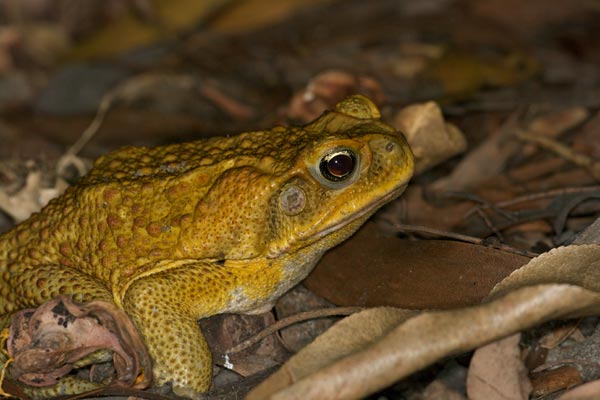
In their inexorable all-devouring march across Australia that started in Queensland in 1935, the cane toads reached the Top End just a few years ago. They are now the most plentiful amphibians in the area. The government has tried various programs to stop their spread, but they are unstoppable.
I’ve written up an account of this three-week trip to Australia here.
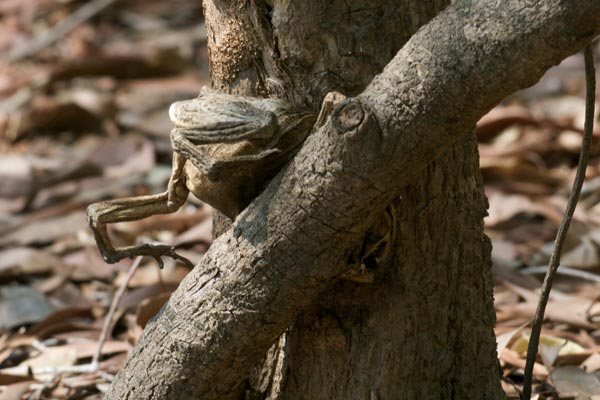
This ex-toad apparently ended its life in a doomed attempt to squeeze into a too-narrow space, probably in pursuit of some tasty native invertebrate. Maybe the Australian government can find some way to turn this into an idea for a new toad eradication program.
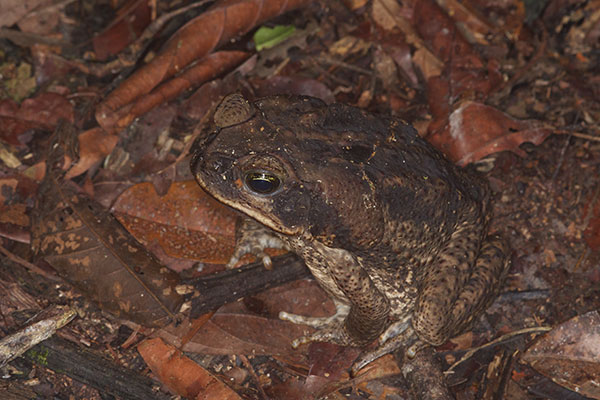
Yup, they're in Peru too. They are everywhere! But at least they belong in Peru.
Here is a complete list of the herps I saw in the wild on my 2013 MT Amazon Expeditions trip.
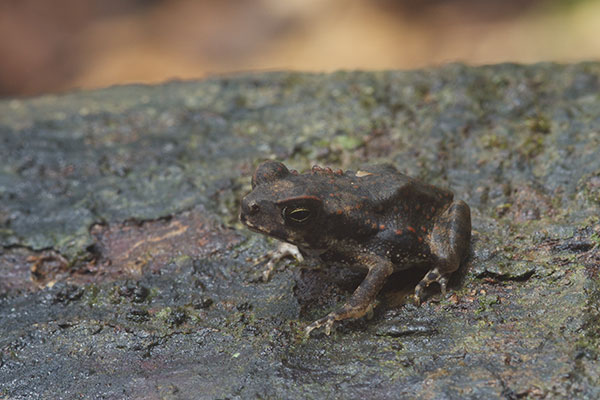
There were a lot of tiny toadlets hopping about the Santa Cruz field station. This one caught my eye as looking different than the others, but Dick Bartlett told me that it was indeed just another R. marina.
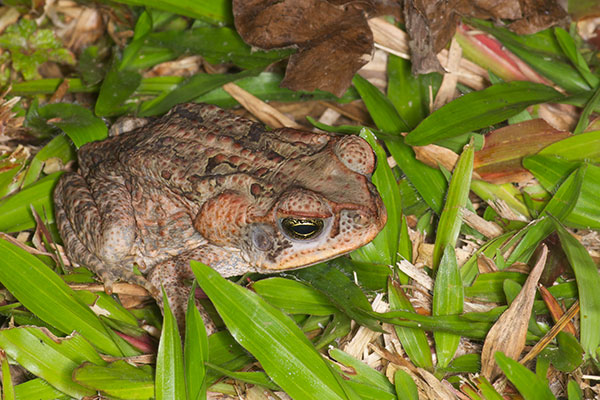
I must admit that I didn't try very hard to get a good picture of Rhinella marina in Peru this year. But hey, I did get *a* picture of Rhinella marina.
Here is a complete list of the herps I saw in the wild on my 2014 MT Amazon Expeditions trip.
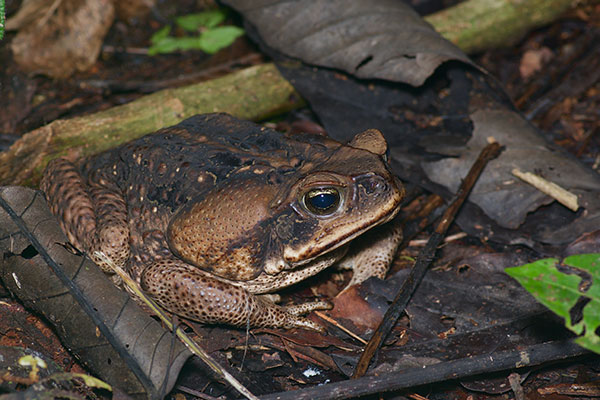
This was certainly the largest amphibian I have yet seen in Peru. It was deep in the forest, the size of a frisbee.
My Travelogues and Trip Lists page includes a complete list of the herps I saw in the wild on my 2016 MT Amazon Expeditions trip.
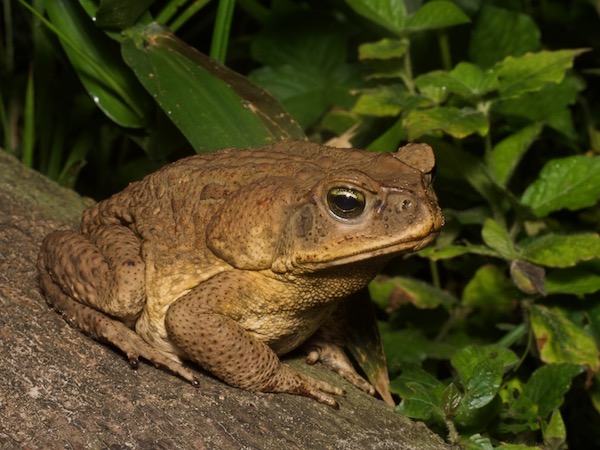
This is a very, very serious toad. Please do not joke about this toad.
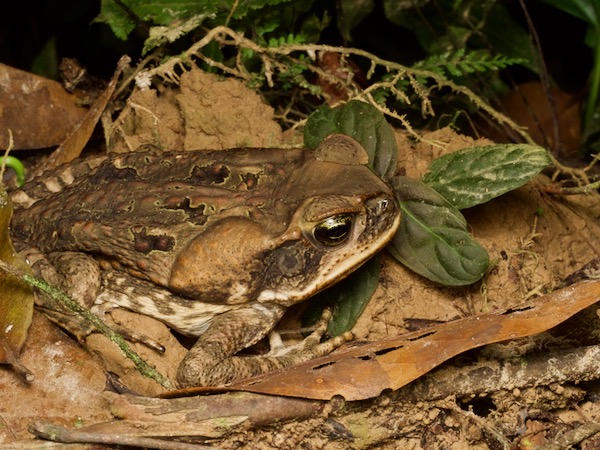
Another monster toad a week later, this one with some more patterning. This one looks more sad than serious.
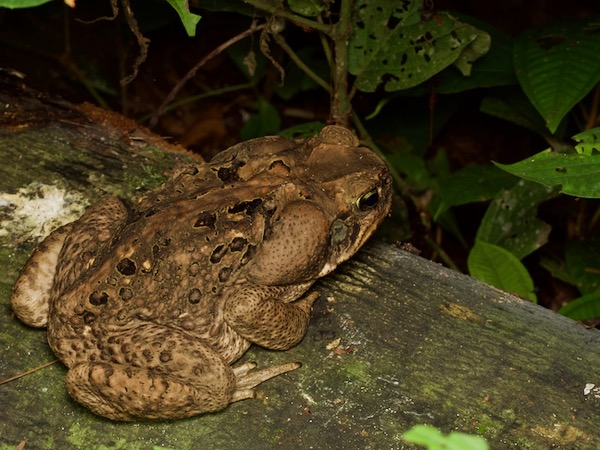
The third and final giant toad from this trip. Expression hard to discern from this angle.
Printed references:
- Barker, J., Grigg, G. C., Tyler, M. J. 1995. A Field Guide to Australian Frogs
- Bartlett, R.D., and Bartlett, P. 2003. Reptiles and Amphibians of the Amazon: An Ecotourist's Guide
- Cogger, H. G. 2014. Reptiles & Amphibians of Australia, Seventh Edition
- Lewis, S. 1989. Cane Toads: An Unnatural History
- Mckeown, S. 1996. A Field Guide to Reptiles and Amphibians in the Hawaiian Islands